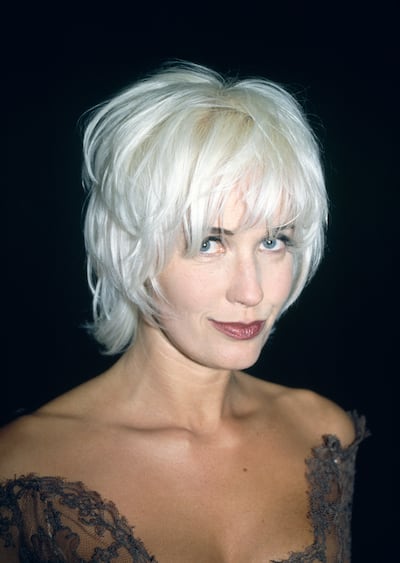The singer Terence Trent D’arby was in his hotel room in New York when he received a call from the front desk. Bob Geldof was downstairs demanding to know if there was any truth to rumours about his wife, Paula Yates, and D’arby.
“Did you knob my wife?” Geldof apparently asked.
“I did what any self-respecting 25-year-old would do,” says D’arby, who today goes as Sananda Maitreya. “I lied to him.”
“Bob’s Paula caught with Black star,” was the racist headline that ran in that week’s News of the World. It fuelled the feeding frenzy around Yates, the glamorous and gobby TV presenter famous – later notorious – for her relationships with some of the biggest rock stars of the age.
RTÉ’s twisty new soap opera stars Ray D’Arcy and, now, Brendan Courtney
‘In the loneliest country in Europe, I’ve started chatting to strangers’
A look inside the Canadian ambassador’s home: ‘This would be a temple in Canada’
Dublin restaurateur says a top fine-dining meal could cost €1,000 per person in future
As her marriage to Geldof unravelled past any possibility of reconciliation, she became a public punchbag. In the documentary Paula (Channel 4, Monday, 9pm), however, we see another side to Yates.
Paula does a good job reminding the viewer of the scale of Yates’ fame – and of the enthusiasm with which everyone collaborated in her public shaming
She is funny, wise, slightly out of control and terrifying to the male-dominated media of the period.
“Please stop being unkind,” she says at one point. She’s on Have I Got New For You?, that Oxbridge guffaw-fest where Boris Johnson was lionised yet where Yates – whose infractions would appear to have included being a woman, being born in Wales and marrying an Irishman – was torn to pieces
“All of the things that made her lovable in her 20s, the fact she was gobby, anarchic and sexual ... by the time she was in her late 30s, they were no longer attractive to lots of people in the media,” says writer Grace Dent. “Mainly men.”
Paula is a fascinating reminder of the anarchy and misogyny of the media in Britain through the 1980s and 1990s. But I’m not sure it unpicks the mystery of what Yates was like under the glammy exterior.

We see her flirtatiously introduce Geldof’s Boomtown Rats on Channel 4′s The Tube around the time she and the Dubliner became an item. Yet, the film doesn’t tell us much about their relationship other than the shallow observation that Yates, who passed away in 2000, was attracted to rock stars.
Geldof isn’t interviewed. There are however contributions from Belinda Brewin, a neighbour in London who became her assistant, and from the older sister of Michael Hutchence, the ‘bad boy’ rock star whose death by suicide sent Yates into a spiral.
Her decline and death are covered in part two. In its first half Paula does a good job reminding the viewer of the scale of Yates’ fame – and of the enthusiasm with which the tabloids, Have I Got News For You? and everyone else collaborated in her public shaming.
There is little sense of Yates as a person beyond her doomed public image (when a newspaper sent the presenter her obituary by accident the headline read “Suicide Blonde”).
But as a study in late 20th-century celebrity, Paula is horribly riveting.
















